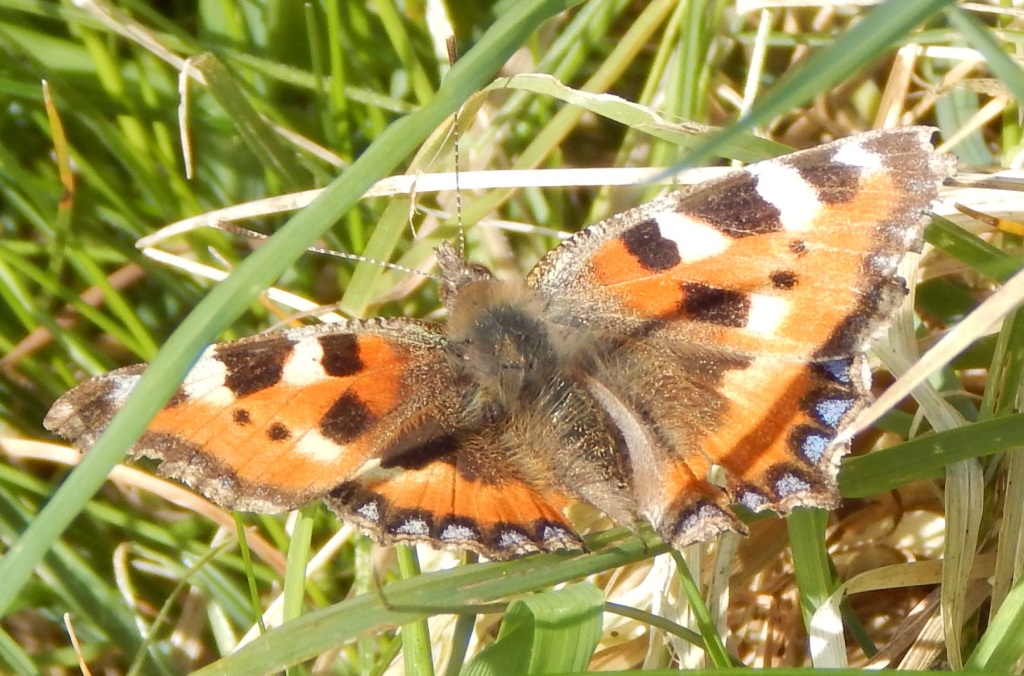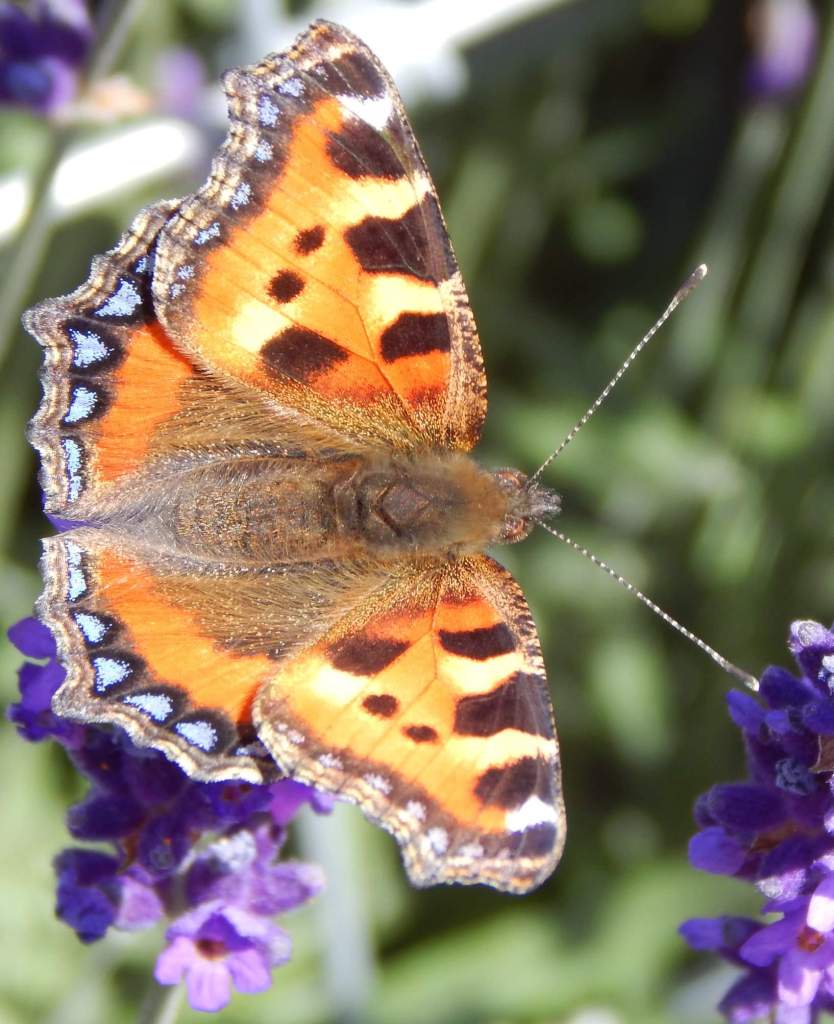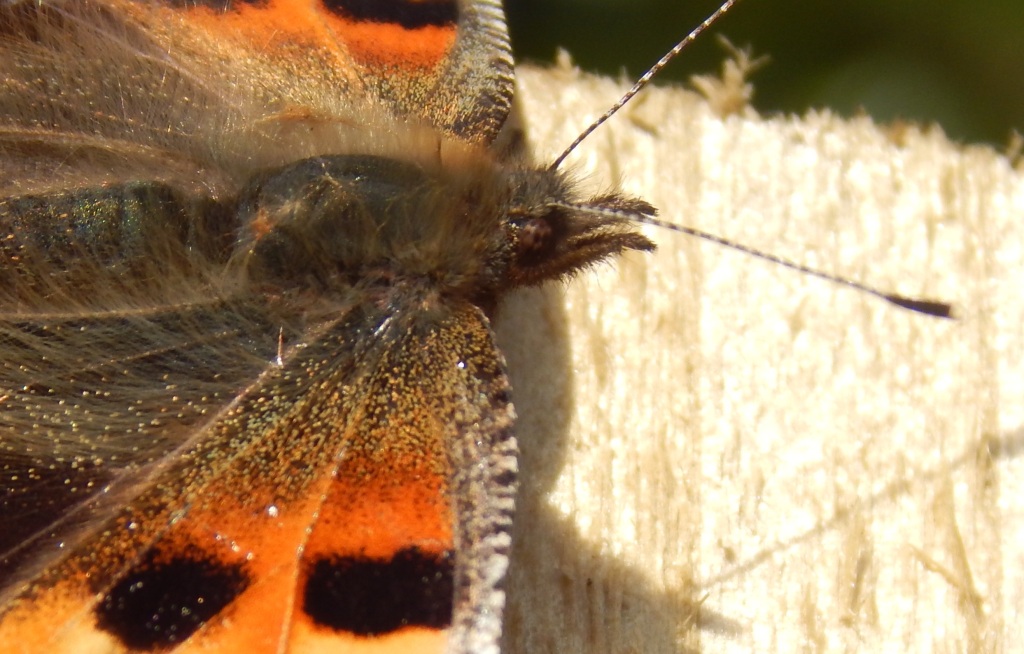
[010] Aglais urticae, Tortoiseshell
Introduction
Aglais urticae, the Tortoiseshell is a large, brightly coloured butterfly. Strictly speaking it should be called the Small Tortoiseshell but it is a very common butterfly and its relative, the Large Tortoiseshell is virtually extinct in Britain.
Its wings bear a similarity in appearance to the material tortoiseshell (which is actually the shell of a turtle.)
Taxonomy
Kingdom – Animals
Phylum – Arthropods
Class – Insects
Order – Lepidoptera (Butterflies and Moths)
Family – Nymphalidae
Genus – Aglais
Scientific Name – Aglais urticae
Wikipedia gives it the synonyms Nymphalis urticae and Vanessa urticae and the genus Aglais is sometimes still considered as a subgenus of Nymphalis. Both genera consist almost entirely of butterflies called tortoiseshells.
Name
There is an obvious similarity in the appearance of the upper sides of the wings and the material tortoiseshell that gives these related species the name tortoiseshell. I presume that those species named just Large Tortoiseshell and Small Tortoiseshell got their names in first before the others.
I cannot find the meaning of Aglais but urticae relates to [353] Urtica dioica, stinging nettle, the food source for its caterpillars. (Those who have studied Latin will notice the genitive ending -ae. Sometimes taxonomists get their Latin correct.)
Description
Aglais urticae is in many ways similar to its sister species, [009] Aglais io. I could have done a joint blog but I wanted to emphasize the real difference in their appearance
This butterfly has a red-brown upper wing with colourful markings. Even though it does not have the eyespots of Aglais io, it uses its colour in the same way as a defence mechanism. The first line of defence is to keep still, showing only the dull under wings, camouflaged as a dead leaf. Then the sudden revelation of its colourful upper wings provides a threatening shock.



Habitat
As for the Peacock, the caterpillar of Aglais urticae feeds on [353] the Stinging Nettle, which is common and widespread. Adults drink nectar from several wild flowers.
Other Notes
This year the Tortoiseshell has been a very common butterfly.
See also
[09] The Peacock Butterfly, Aglais io, appeared yesterday.
The Large Tortoiseshell has disappeared from Britain in recent years and is considered extinct here. There are occasional sightings, perhaps deliberately released. Its food source is the Elm tree so its decline is not surprising. The elm has been virtually eliminated from Britain by Dutch Elm disease.

Pingback: [274] Polygonia c-album, Comma | The Species of Britain
Pingback: [353] Urtica dioica, Stinging Nettle | The Species of Britain
Pingback: [355] Vanessa atalanta, Red Admiral | The Species of Britain